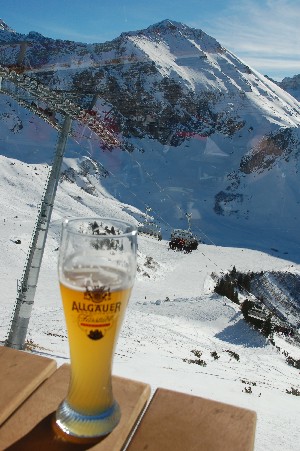„Why is Bavaria famous everywhere throughout the world for its Bratwurst?“ I ask myself in a previous entry on the Oktoberfest a couple of weeks ago. Not only for its Bratwurst in general but also for its Weißwurst in particular.
The 22nd of February 1857 the beer cellar „Zum ewigen Licht“ at the Marien- platz in Munich is packed with guests. The business is running well this day. But suddenly, now of all times, the sheep bowel skins, where the butcher usually pours in the sausage meat, are all used up. What to do? Unceremo- niously it occurs to Sepp Moser that he could use pig skins instead. Unfortu- nately though these are way too delicate, bursting open while roasting. An- other brilliant idea comes to Moser’s mind. Why not boil the sausages in hot water? The guests are enthusiastic and the day is saved.
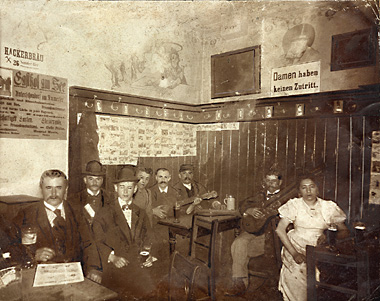
Photo: Stadtarchiv München, Slg. Valentin
If this legend was true, the white sausage would have celebrated its 150th birthday one month ago. After the Weißwurst was born and spread throughout the world, nowadays about 75 million white sausages are produced each year. But the head of Munich’s municipal archives, Richard Bauer, has now investi- gated the origins of the Weißwurst and states that „Munich’s Original“ is in fact not only much older but also stems from somewhere else.
Although the pub „Zum ewigen Licht“ and his leaseholder Sepp Moser existed, there are already records of the famous Weißwurst in 1814, when munichois sucked white sausages during Maibock time (bock beer time in May). These were partly made of pork and veal, spicy seasoned and very hard to digest. Bauer concludes that the Weißwurst is nothing more than a further develop- ment of the Maibockwurst (frankfurter). And this one looks like the French „boudin blanc“, which was already produced since the 14th century.
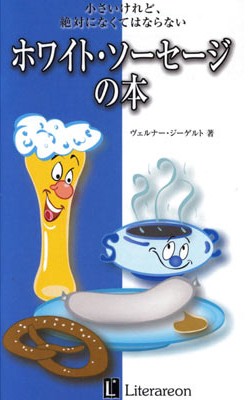 The Weißwurst not one of Munich’s Originals? The Schutzgemeinschaft Münchner Weißwurst (Association for the Protection of Munich’s Weißwurst), who tries to protect its name though- out Europe as a brand, must be completely devastated. The battle for the Weißwurst as well as for the Nuremberg Bratwurst have their fate in the hands of the European Patent Court right now. If patent judges really protected the white sausage, it could only be produced in Munich and on its outskirts further on. The Butchers‘ Association of Bavaria is against the decision because the majority of Munich’s Original comes from large butcher businesses in Augsburg. Once in a while it is even spread that the better Munich Weißwurst is from around there.
The Weißwurst not one of Munich’s Originals? The Schutzgemeinschaft Münchner Weißwurst (Association for the Protection of Munich’s Weißwurst), who tries to protect its name though- out Europe as a brand, must be completely devastated. The battle for the Weißwurst as well as for the Nuremberg Bratwurst have their fate in the hands of the European Patent Court right now. If patent judges really protected the white sausage, it could only be produced in Munich and on its outskirts further on. The Butchers‘ Association of Bavaria is against the decision because the majority of Munich’s Original comes from large butcher businesses in Augsburg. Once in a while it is even spread that the better Munich Weißwurst is from around there.
But for the fact nothing is exactly known. Munich’s Weißwurst though for sure is one of tourists‘ favorites … and with a neat legend as well. Not surprising that the very famous German Weißwurst-Knigge by Werner Siegert, translated in 2004 in „How to eat the genuine Bavarian Weisswurst in a dignified way„, was also published for our Japanese guests now.
Here a few facts:
1) The „real“ Munich Weißwurst consists of a minimum of 51% veal.
2) Other ingredients are: bacon, rind, parsley, lemon peel, onions, herbs (especially macis), and crashed ice.
3) The mixture is filled into pork bowel skins and scalded in hot water (not boiling).
4) Let the Weißwurst stand for eight minutes to be right on time.
5) Always order piece by piece. A pair is only ordered by tourists.
6) In earlier times the Weißwurst was to be consumed by noon, otherwise the sausage would have gone bad because of no possiblilities for refrigeration. Nowadays you are allowed to enjoy throughout the day.
7) There is no ketchup on the side, please! The only three side orders allowed are sweet Bavarian mustard, pretzels, and wheat beer/weissbier.
8) For consumption techniques please observe your local Bavarian sitting next to you or the guide to do it „in a dignified way“.
I am hungry now …
Sources:
– Allgäuer Zeitung, Nr. 36, 13.02.2007, S. 4.
– Süddeutsche Zeitung, 22.02.2007.
– BR-Online.de, 24.06.2004.
– DW-World.de, Deutsche Welle, 19.05.2005.
– DW-World.de, Deutsche Welle, 23.11.2005.










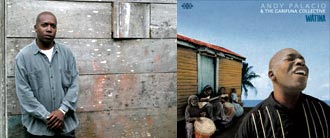




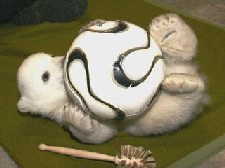

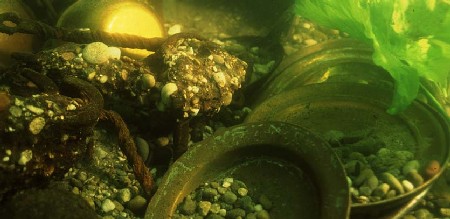
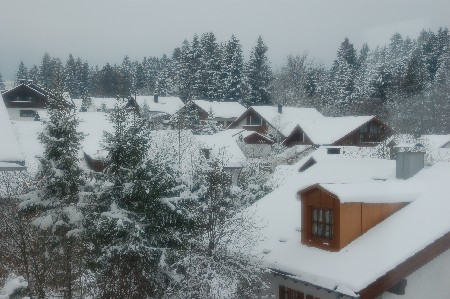

 The Weißwurst not one of Munich’s Originals? The
The Weißwurst not one of Munich’s Originals? The 